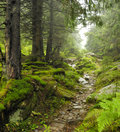|
Paradoxish posted:Tab is really trying to spin a narrative that the problem is centered on high-end or boutique consumption. He was trying to zero-in on exotic and luxury cars in the climate change thread, even after it was pointed out that most exotic cars get equivalent/better gas mileage than the average pickup truck and that luxury cars don't get meaningfully worse mileage than any other car in the same size class. To be fair, "everyone richer than I am is the problem" is a common sentiment. It's right up there with "everyone poorer than me is the problem."
|
|
|
|

|
| # ? Jun 7, 2024 15:29 |
|
Paradoxish posted:Tab is really trying to spin a narrative that the problem is centered on high-end or boutique consumption. He was trying to zero-in on exotic and luxury cars in the climate change thread, even after it was pointed out that most exotic cars get equivalent/better gas mileage than the average pickup truck and that luxury cars don't get meaningfully worse mileage than any other car in the same size class. Yeah but in theory they only get 2mpg if you're literally racing them on a track and CommieGIR posted:
didn't ford just outsource the last of its production to china and axe their entire product line except mustangs, trucks, very base model focuses (focii? focoi?), trucks, and whatever the gently caress the edge is supposed to be lmao
|
|
|
|
Phanatic posted:If the reactor's built by the sea it's cooled with seawater. That's not to say that seawater is in the coolant loop, inside the reactor, nobody does that and it would be insane. But the water you're using to cool the steam to condense it back to water is seawater. Oh haha, I see where that could be understood/implied in what I wrote, and yeah, that would be loving nuts. I need to be more precise in my writing. MrYenko posted:...And seawater-cooled condensors are extremely common in steam turbine and combined cycle plants around the world, in places near the ocean. There is definitely a maintenance penalty to be paid, but ready access to an effectively limitless thermal sink makes that price worth paying. is much better.
|
|
|
|
Ok that's interesting thanks, I think I read somewhere France has 80 percent of it's energy supplied by nuclear and it took 50 percent of it's fresh water, which seemed like probably the strongest case against it
|
|
|
|
Kashclarke posted:Ok that's interesting thanks, I think I read somewhere France has 80 percent of it's energy supplied by nuclear and it took 50 percent of it's fresh water, which seemed like probably the strongest case against it It's a complicated issue, but there's an important consideration here which is to distinguish between water withdrawal (drawing water for cooling and then returning it directly to the source) and water consumption (evaporative usage). Nuclear power generation can withdraw quite a bit of water (40 percent of US freshwater withdrawals in 2000) but actually consume very little (about 3 percent in the same period). The cooling towers used by some nuclear power plants can vastly decrease water withdrawal by recirculating water, but moderately increases the consumption levels. https://www.ucsusa.org/resources/how-it-works-water-electricity https://wiseinternational.org/nuclear-monitor/770/how-much-water-does-nuclear-power-plant-consume http://large.stanford.edu/courses/2017/ph241/styles2/
|
|
|
|
MrYenko posted:...And seawater-cooled condensors are extremely common in steam turbine and combined cycle plants around the world, in places near the ocean. There is definitely a maintenance penalty to be paid, but ready access to an effectively limitless thermal sink makes that price worth paying. Note that once-through cooling systems are increasingly being banned due to the environmental impacts caused by decline in thermal water quality. That's why Moss Landing (NG) and Diablo Canyon (Nuke) were end-of-lifed early in California. Kashclarke posted:Ok that's interesting thanks, I think I read somewhere France has 80 percent of it's energy supplied by nuclear and it took 50 percent of it's fresh water, which seemed like probably the strongest case against it A big challenge in understanding water for energy is that there is a fundamental difference between withdrawals and consumption. Thermal power plants often withdrawal considerable amounts of water, but they don't consume it. However thermal impacts are still a decline in water quality, so while the water isn't consumed it is still impacted by the process. This becomes more and more of an issue as climate change also increases water temps and impacts the hydrological cycle. We already see hydropower operations constrained by the needs of river temp and as I mentioned with Moss Landing and Diablo Canyon, regulations on water temp are also closing thermal power plants too. edit: fb, also here's a cool graph  (http://www.cwatershedalliance.com/pdf/SolarDoc01.pdf)
|
|
|
|
Everything except plants that run the turbine off the gas right from combustion and photovoltaic cells uses a ton of water. But water use is more complicated, because it's tracked in aggregate, but different cooling solutions use more or less water. Like a lot of power plants on rivers take advantage of the river water itself to dump heat into. This means that almost all of the water used ends up right back in the river. Of course, this leads to thermal pollution and is bad for the fish. Cooling towers turn a lot of the water into steam, but don't dump heat into the ecosystem and disrupt the fish as much. Coastal salt water cooling costs more because you've got corrosive sea water in the loop. You could also hypothetically make a radiator to cool a plant, but you'd end up spending a lot of the energy output the plant produces running the radiator system, but if you were worried about conserving as much water as possible it'd be the way to go. Everything is a trade off, and there isn't any free lunch. The big problem comes from the fact that a lot of the trade offs end up falling into someone else's problem, and that's why pollution is such a problem, we haven't paid the piper. For what it is worth, the US has a lot of water to spare, and no one is going thirsty because all the water is being sucked up by power plants. Finally, you were probably looking at the total use of water withdraws, not total freshwater available. For that, 50% is pretty normal. Look at the US: https://www.usgs.gov/mission-areas/water-resources/science/total-water-use?qt-science_center_objects=0#qt-science_center_objects We use almost half of our water withdraws on thermoelectric power (The figures include 4 sources of water withdraw, surface water and surface saline, and ground water and ground saline. If you poke around you can look at more detailed breakdowns by going to the pages for each particular use.) edit: Oh, uh, wow. I was slow on the draw for this one.
|
|
|
|
Trabisnikof posted:
Ok, this actually illustrates alot and helps my understanding of all this. Thanks for the links everyone, like I mentioned, I studied PV and wind in school and the idea of what you do with the water after you have used it to turn a turbine had never really occurred to me until I had gotten into an argument with a guy and I realized I had no idea what I was talking about when it came to that.
|
|
|
|
Are stirling engines or something not used to maximize the energy retrieval from powerplants? If so, why not, lovely reliability? It always felt like the thermal spillage from nuke plants are such a waste and utilizing stirling engines to convert more thermal energy or enhance cooling would be so obvious, yet i have never heard anything of that.
|
|
|
|
Zudgemud posted:Are stirling engines or something not used to maximize the energy retrieval from powerplants? If so, why not, lovely reliability? It always felt like the thermal spillage from nuke plants are such a waste and utilizing stirling engines to convert more thermal energy or enhance cooling would be so obvious, yet i have never heard anything of that. This is why nuclear should be built right downtown and not in remote areas so they can be part of a district heating system!
|
|
|
|
Zudgemud posted:Are stirling engines or something not used to maximize the energy retrieval from powerplants? If so, why not, lovely reliability? It always felt like the thermal spillage from nuke plants are such a waste and utilizing stirling engines to convert more thermal energy or enhance cooling would be so obvious, yet i have never heard anything of that. Most of the more modern coal plants have been designed to extract just about as much energy as is efficiently possible from the flue gasses. They have the gasses run through multiple heat exchangers to pre-heat the incoming air. So that by the time the gas is hitting the exhaust stack, it is 300F or lower. Any redirecting to extract any more energy is going to cause inefficiencies earlier in the gas path by not letting it flow efficiently. If you were thinking more about combustion turbines, that is already being done with the combined cycle plant. The waste heat is used to make steam that turns a separate turbine.
|
|
|
|
Orvin posted:Most of the more modern coal plants have been designed to extract just about as much energy as is efficiently possible from the flue gasses. They have the gasses run through multiple heat exchangers to pre-heat the incoming air. So that by the time the gas is hitting the exhaust stack, it is 300F or lower. Any redirecting to extract any more energy is going to cause inefficiencies earlier in the gas path by not letting it flow efficiently. Yeah, that's the sense I get from it. There are other options to extract energy from waste heat that offer a larger ROI for most of the temperature range. While a Stirling cycle could extract a bit more at the end, the cost of building and maintaining it is greater than the value of the extracted energy.
|
|
|
|
Baronjutter posted:This is why nuclear should be built right downtown and not in remote areas so they can be part of a district heating system! PURPA cogeneration attached.
|
|
|
|
Baronjutter posted:This is why nuclear should be built right downtown and not in remote areas so they can be part of a district heating system! You know, you joke, but I do actually wonder if we could see the return of steam pipes in major cities. I know that there were still steam suppliers in my old city a decade or so ago, but they were rapidly falling into disuse. For a lot of applications, it's probably more energy efficient to pipe steam to end users in a local area like a downtown then it is to convert thermal to electrical and back to thermal. Maybe the thermal energy from municipal incinerators could be recaptured this way?
|
|
|
|
Killer-of-Lawyers posted:You know, you joke, but I do actually wonder if we could see the return of steam pipes in major cities. I know that there were still steam suppliers in my old city a decade or so ago, but they were rapidly falling into disuse. For a lot of applications, it's probably more energy efficient to pipe steam to end users in a local area like a downtown then it is to convert thermal to electrical and back to thermal. District heating projects for industrial and domestic use are gaining traction in the UK, Slough CHP is one, Southampton has a geothermal station, others are planned.
|
|
|
|
Killer-of-Lawyers posted:You know, you joke, but I do actually wonder if we could see the return of steam pipes in major cities. I know that there were still steam suppliers in my old city a decade or so ago, but they were rapidly falling into disuse. For a lot of applications, it's probably more energy efficient to pipe steam to end users in a local area like a downtown then it is to convert thermal to electrical and back to thermal. Where did you live that the steam system was actively paring back? To be honest it's a lot more common for localities/companies to simply not expand the system to serve new areas/buildings on lots not already served, as buildings already hooked up to such systems usually have cheaper heating/cooling/cleaning etc via using the existing steam systems rather than refitting the building to use another method.
|
|
|
|
fishmech posted:Where did you live that the steam system was actively paring back? To be honest it's a lot more common for localities/companies to simply not expand the system to serve new areas/buildings on lots not already served, as buildings already hooked up to such systems usually have cheaper heating/cooling/cleaning etc via using the existing steam systems rather than refitting the building to use another method. Houston. Last time I read about it, they had lost some of the customers in the medical center. This was, I dunno, around 2005 and drat if I can't find the article or anything. Either way, they seem to be doing fine. I still seem to recall that there were customers or some supplier outside of the campus, but I can't really find anything out about them. My memory could just be wrong.
|
|
|
|
What is the latest in replacing generators for portable power with solar/battery? I am responsible for looking after about 16 portable generators from 20 to 650 kva in size and the resources required (supervision/people/vehicles/tooling) for fueling / maintaining them shits me. Also it would probably be good for the environment if all the portable ICE generators went the way of the dodo. For our power house (6 x 4 MVA HFO fueled), looking at solar but capex / land take for that is not going to happen anytime soon - thinking if is possible to have a few wins on the portable sets, helps build a case for supplementation/replacement of the power house. Electric Wrigglies fucked around with this message at 14:19 on Oct 30, 2019 |
|
|
|
Baronjutter posted:This is why nuclear should be built right downtown and not in remote areas so they can be part of a district heating system! Admittedly, housing blocks with district heating and green space are efficient, coupled with local retail and mass transportation. Obviously, specifically the Soviets had other issues going on besides that. Also, I doubt ripped-jeans are responsible for any significant percentage of greenhouse gases.
|
|
|
|
Electric Wrigglies posted:What is the latest in replacing generators for portable power with solar/battery? You might start with just adding some solar to a small ICE setup for a hybrid. That might ease acceptance and people may appreciate how rarely they have to go refill the diesel on it, while assuaging fears that the solar won't be able to keep up by itself. There's some temporary traffic lights near us while road construction is going on, and they're run by hybrid generator setups (solar panels on top, diesel generators at the base). They seem to run almost entirely off the solar panels, though, as I never hear the diesels running - even at night.
|
|
|
|
Sorry but until we ban ripped jeans there's simply no point in trying to regulate the natural gas industry 
QuarkJets fucked around with this message at 02:48 on Oct 31, 2019 |
|
|
|
Our parents really were right when they said ripped jeans would be the end of civilization
|
|
|
|
|
Electric Wrigglies posted:What is the latest in replacing generators for portable power with solar/battery? That's a lot of power. Even your smallest genset will be expensive to replace with something renewable/battery powered. What's the run time for whatever it is you are powering?
|
|
|
|
Marxalot posted:"Throw solar and nuclear everywhere" is an actual solution that works. Solar is great and all but as we've covered before, storage is the problem we need to solve. It depends on the time of the year and your location, but in California during the summer, energy usage peaks right as solar drops off. California also has excess solar capacity at times and has to pay other states to take excess power at peak solar times during the summer. There aren't a lot of easy and cheap to implement grid scale storage methods available right now, and in general you're going to face environmental and legal challenges getting them approved (see below). Cheap storage plus solar would also make electrification of homes economical, and you could lower emissions with electric stoves and water heaters (avoiding the cooking with gas vs electric argument for now). And nuclear is great too, but we've also covered the many problems with getting it built rapidly and in large quantities in this thread before. Existing environmental regulations like CEQA are abused by NIMBYs and are really effective at making everything cost a lot more, and take longer to complete. If we were serious about climate change, we'd modify existing environmental laws to let certain projects go through with a lower amount of review / faster process, but the second you tried to change the law you'd be branded as someone who hates the environment by groups like the Sierra Club. They're equally interested in preserving the status quo / not making it easier for more people to move to places like Los Angeles as they are in preserving the environment, so good luck with that. Once everything is approved and you have your combined operating license from the NRC (which I understand was a pain in the rear end for the most recent nuclear projects in Georgia and South Carolina, but don't know the details), you now have to get enough welders, pipefitters, etc that have sufficient experience to build a plant, which is also harder than you think. You could do some kind of subsidy to encourage more people to work in those fields, but they still need years of experience. Also, just getting the transmission lines for these new projects is a huge pain in the rear end, once again due to NIMBYs. It's almost November, but here is why California needs gas plants that can quickly ramp up. As the sun goes down, the demand that can't be met with solar and wind goes up 13,500MW in 3 hours. 
MomJeans420 fucked around with this message at 01:25 on Oct 31, 2019 |
|
|
|
MomJeans420 posted:Solar is great and all but as we've covered before, storage is the problem we need to solve. It depends on the time of the year and your location, but in California during the summer, energy usage peaks right as solar drops off. California also has excess solar capacity at times and has to pay other states to take excess power at peak solar times during the summer. There aren't a lot of easy and cheap to implement grid scale storage methods available right now, and in general you're going to face environmental and legal challenges getting them approved (see below). Cheap storage plus solar would also make electrification of homes economical, and you could lower emissions with electric stoves and water heaters (avoiding the cooking with gas vs electric argument for now). We do not have this luxury. Again. We've covered why Natural Gas is not a feasible option given the reality of Climate Change 30 years ago? Yes. Now? We do not. Your trust in these companies to regulate themselves is disturbing. We know better. Depending upon more gas would just result in more drilling, more fracking, more methane, more leaks, more fighting against emissions regulations and environmental protections. Natural Gas is not an option if we want to tackle climate change. Its just another fossil fuel and it does not need to be ramped up. It needs to be going away alongside coal. We do not have the luxury of switching to another fossil fuel and hoping that, this time, the gas industry won't lie and won't fight regulation. Its especially ironic that you say this as the private, for profit PG&E is largely responsible for MORE devestating fires. And you want to trust these guys to not squandering their finances with more bonuses and investor payouts instead of investing in emissions controls? You'd have to ignore reality to believe this is true. California is burning. Largely due in part to the company that, we hope, will regulate their methane emissions at their plants.... CommieGIR fucked around with this message at 02:01 on Oct 31, 2019 |
|
|
|
MomJeans420 posted:It's almost November, but here is why California needs gas plants that can quickly ramp up. As the sun goes down, the demand that can't be met with solar and wind goes up 13,500MW in 3 hours. Yeah, I brought this up earlier, and this got ignored in the thread in favor of more posts about climate change doomerism. In a hypothetical future where a large fraction of the US' electricity generation is from intermittent renewable sources, and in the absence of an economical electricity storage technology or great over-construction of renewable resources, a complementary technology is needed to be able to quickly supply electricity when the intermittent sources cannot. Is nuclear electricity this technology? Is it straightforward to ramp nuclear power plants' electricity generation up and down quickly?
|
|
|
|
silence_kit posted:Is nuclear electricity this technology? Is it straightforward to ramp nuclear power plants' electricity generation up and down quickly? ....how would it make it more expensive? For the most part, operating the plant is pretty cheap. And the reactor, unless its going down for maintenance, is kept no lower than 80% capacity round the clock. silence_kit posted:Yeah, I brought this up earlier, and this got ignored in the thread in favor of more posts about climate change doomerism. Hm, Methane being a strong greenhouse gas, maybe its worth talking about when you suggest it as an energy source?  You are part of the problem if you think ignoring the issues somehow makes your point valid. If you are unable to address the climate impact from natural gas production, then of course nobody is going to take you seriously. CommieGIR fucked around with this message at 02:08 on Oct 31, 2019 |
|
|
silence_kit posted:Yeah, I brought this up earlier, and this got ignored in the thread in favor of more posts about climate change doomerism. In a hypothetical future where a large fraction of the US' electricity generation is from intermittent renewable sources, and in the absence of an economical electricity storage technology or great over-construction of renewable resources, a complementary technology is needed to be able to quickly supply electricity when the intermittent sources cannot. Probably not tbh. I'm not a nuclear engineer, but in my experience heavy plant likes to run at or near its nameplate rating.
|
|
|
|
|
silence_kit posted:Yeah, I brought this up earlier, and this got ignored in the thread in favor of more posts about climate change doomerism. In a hypothetical future where a large fraction of the US' electricity generation is from intermittent renewable sources, and in the absence of an economical electricity storage technology or great over-construction of renewable resources, a complementary technology is needed to be able to quickly supply electricity when the intermittent sources cannot. No, it is not. Nuclear reactors don't like changing their power output. It takes a long time to ramp one up or down. Its role is baseline generation, as invariant as possible. Peaking has to be supplied by other generation methods - gas, hydro, pumped storage, batteries, or something else like that.
|
|
|
|
silence_kit posted:Yeah, I brought this up earlier, and this got ignored in the thread in favor of more posts about climate change doomerism. In a hypothetical future where a large fraction of the US' electricity generation is from intermittent renewable sources, and in the absence of an economical electricity storage technology or great over-construction of renewable resources, a complementary technology is needed to be able to quickly supply electricity when the intermittent sources cannot. It doesn't have to be generation that ramps up and down, nuclear plus intermittent renewables can aim for the maximum demand, and when supply gets too high, you can turn on industrial demand sinks (built for that purpose) like water storage pumps, battery charging, desalination plants, wastewater treatment, carbon sequestration, chemical fuel production, etc. It's a giant engineering project, but we need to do most of those things anyway, we just have to build facilities with demand-response in mind that can throttle up and down the way peaking plants do.
|
|
|
|
CommieGIR posted:....how would it make it more expensive? For the most part, operating the plant is pretty cheap. And the reactor, unless its going down for maintenance, is kept no lower than 80% capacity round the clock. You are getting this totally backwards. A technology which is mostly operating cost would be better to run intermittently. Because almost all of the cost of nuclear electricity is in the "setup cost", the operators are incentivized to run the plant at full capacity. Extreme example to illustrate the importance of running a nuclear power plant as often as possible: your new 1 Giga-Watt nuclear power plant just cost 10 billion dollars to build and costs nothing to run. After running for one hour, a fatal screw-up in the engineering is found, and the plant is forced to close. Congratulations, you have just paid $10k per kwh for your electricity. Maybe nuclear power plants can be ramped up and down quickly (I don't know--this is why I'm asking), but I suspect that it isn't done a lot currently, because this case isn't that interesting to the operators. You are also totally missing the point of my post. Here it is again: silence_kit posted:In a hypothetical future where a large fraction of the US' electricity generation is from intermittent renewable sources, and in the absence of an economical electricity storage technology or great over-construction of renewable resources, a complementary technology is needed to be able to quickly supply electricity when the intermittent sources cannot. silence_kit fucked around with this message at 02:37 on Oct 31, 2019 |
|
|
|
silence_kit posted:Maybe nuclear power plants can be ramped up and down quickly (I don't know--this is why I'm asking), but I suspect that it isn't done a lot currently, because this case isn't that interesting to the operators. They are rarely ramped down. That was my point. That's how reactors work. It makes little sense to even consider ramping down a reactor. The nameplate capacity is its nearly year round capacity, and it never strays too far below it silence_kit posted:You are getting this totally backwards. A technology which is mostly operating cost would be better to run intermittently. Because almost all of the cost of nuclear electricity is in the "setup cost", the operators are incentivized to run the plant at full capacity. Extreme example to illustrate the importance of running a nuclear power plant as often as possible: your new 1 Giga-Watt nuclear power plant just cost 10 billion dollars to build and costs nothing to run. After running for one hour, a fatal screw-up in the engineering is found, and the plant is forced to close. Congratulations, you have just paid $10k per kwh for your electricity. Which is why nuclear is so heavily regulated. Unlike Natural Gas, which is a greenhouse gas 4x more potent than CO2. Let's be honest: The 'for-profit' is part of the problem. We're in this lovely climate situation BECAUSE of the desire to run everything as cheaply as possible to maximize profits. We're going to cheap ourselves into disaster. https://www.eia.gov/tools/faqs/faq.php?id=104&t=3 
CommieGIR fucked around with this message at 02:51 on Oct 31, 2019 |
|
|
|
You still aren't getting it. In a hypothetical world where a huge fraction of the US' electricity supply is from intermittent renewable sources, there would be little need for baseload power generation. You'd just have intermittent renewables, and other electricity sources which could be turned on and off quickly to fill in the gaps. If it is not possible or would be wildly uneconomical for nuclear electricity to play that complementary role to the intermittent renewable electricity sources, then there would be not much point to nuclear electricity in this hypothetical future. edit: CommieGIR posted:Let's be honest: The 'for-profit' is part of the problem. We're in this lovely climate situation BECAUSE of the desire to run everything as cheaply as possible to maximize profits. We're going to cheap ourselves into disaster. If the government ran the plants, they'd do the same thing. It has nothing to do with profit and everything to do with using your resources efficiently. silence_kit fucked around with this message at 03:32 on Oct 31, 2019 |
|
|
|
silence_kit posted:You still aren't getting it. In a hypothetical world where a huge fraction of the US' electricity supply is from intermittent renewable sources, there would be little need for baseload power generation. You'd just have intermittent renewables, and other electricity sources which could be turned on and off quickly to fill in the gaps. Except we don't live in that world. US Grids are not combined, and it makes little sense to send, say, renewable energy from one side of the US to the other because Resistance in the wires over that distance would make that nearly impossible. There is always going to be some sort of baseload.
|
|
|
|
Deteriorata posted:No, it is not. Nuclear reactors don't like changing their power output. It takes a long time to ramp one up or down. Its role is baseline generation, as invariant as possible. Overbuild and when there's too much run the more expensive CO2 scrubbers.
|
|
|
silence_kit posted:You are getting this totally backwards. A technology which is mostly operating cost would be better to run intermittently. Because almost all of the cost of nuclear electricity is in the "setup cost", the operators are incentivized to run the plant at full capacity. Extreme example to illustrate the importance of running a nuclear power plant as often as possible: your new 1 Giga-Watt nuclear power plant just cost 10 billion dollars to build and costs nothing to run. After running for one hour, a fatal screw-up in the engineering is found, and the plant is forced to close. Congratulations, you have just paid $10k per kwh for your electricity. Nuclear power plants cannot be ramped up or down quickly, since you don't want to overshoot the output of the reactor and it still creates heat when you turn it off. It takes hours to adjust the output. Your example of mainly intermittent renewable sources without storage can only work if you massively overbuild the capacity or use gas power plants. If you overbuild the capacity, you don't use it all, wasting a lot money. If you use gas, you are negating the reason to use renewables. Using nuclear power for baseline power means you needs less of an overcapacity for renewables. You throttle the renewables or use their left over capacity for other things.
|
|
|
|
|
e: Yeah that ^ Wouldn't renewable power be used to augment a nuclear power baseline?
|
|
|
|
Shifty Nipples posted:Wouldn't renewable power be used to augment a nuclear power baseline? Of course. No problems.
|
|
|
|
Lurking Haro posted:If you use gas, you are negating the reason to use renewables. Not true. Wind and solar electricity are both cheap. That's a pretty good reason to use them. Please, someone correct me if I'm wrong, but the cost of wind and solar electricity is still dropping. Lurking Haro posted:If you overbuild the capacity, you don't use it all, wasting a lot money. Given that wind and solar electricity is cheaper than nuclear electricity, would it really be that wasteful to overbuild wind & solar? Lurking Haro posted:or use gas power plants. Yeah, it seems to me that there would be an important role for natural gas plants in a hypothetical future US electricity generation scenario which largely consists of intermittent renewable resources, if it truly is wildly uneconomical/not possible to ramp nuclear power plants up and down quickly. If so, there really wouldn't be much point in building new nuclear power plants.
|
|
|
|

|
| # ? Jun 7, 2024 15:29 |
|
https://www.powermag.com/flexible-operation-of-nuclear-power-plants-ramps-up/?pagenum=1 I found this concerning base load vs ramping up and down. It seems that yes, you can, and nations like france have designed their reactors around it. The reason you don't see it though is because a nuclear plant doesn't really save much money by powering down (Fuel cost and burn rate is a small part of the operating costs) so if you can, you want to run it at as close to 100% as you can forever. If you were developing for a grid without peaker plants, then you could build reactors that are better at ramping up and down with demand.
|
|
|





































